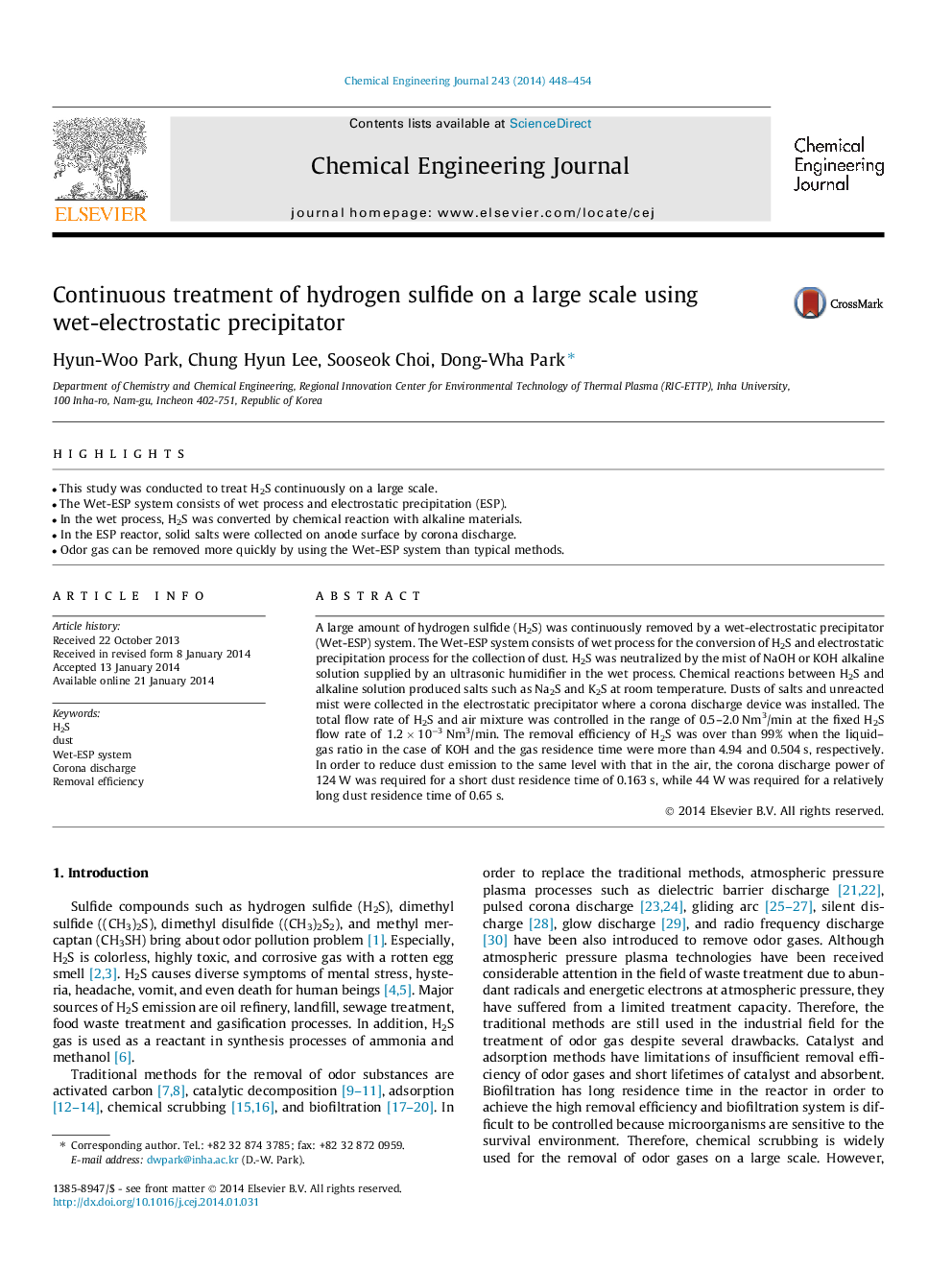| کد مقاله | کد نشریه | سال انتشار | مقاله انگلیسی | نسخه تمام متن |
|---|---|---|---|---|
| 147883 | 456401 | 2014 | 7 صفحه PDF | دانلود رایگان |
• This study was conducted to treat H2S continuously on a large scale.
• The Wet-ESP system consists of wet process and electrostatic precipitation (ESP).
• In the wet process, H2S was converted by chemical reaction with alkaline materials.
• In the ESP reactor, solid salts were collected on anode surface by corona discharge.
• Odor gas can be removed more quickly by using the Wet-ESP system than typical methods.
A large amount of hydrogen sulfide (H2S) was continuously removed by a wet-electrostatic precipitator (Wet-ESP) system. The Wet-ESP system consists of wet process for the conversion of H2S and electrostatic precipitation process for the collection of dust. H2S was neutralized by the mist of NaOH or KOH alkaline solution supplied by an ultrasonic humidifier in the wet process. Chemical reactions between H2S and alkaline solution produced salts such as Na2S and K2S at room temperature. Dusts of salts and unreacted mist were collected in the electrostatic precipitator where a corona discharge device was installed. The total flow rate of H2S and air mixture was controlled in the range of 0.5–2.0 Nm3/min at the fixed H2S flow rate of 1.2 × 10−3 Nm3/min. The removal efficiency of H2S was over than 99% when the liquid–gas ratio in the case of KOH and the gas residence time were more than 4.94 and 0.504 s, respectively. In order to reduce dust emission to the same level with that in the air, the corona discharge power of 124 W was required for a short dust residence time of 0.163 s, while 44 W was required for a relatively long dust residence time of 0.65 s.
Journal: Chemical Engineering Journal - Volume 243, 1 May 2014, Pages 448–454
